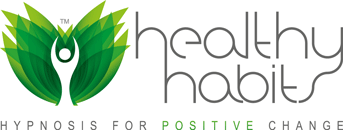- 2 min read

How breathing properly can make you feel better
These days we are all in search of better health for ourselves and our families. To achieve this we tend to look towards improving our diets and exercise levels and other lifestyle changes, such as more relaxation time. Whilst these factors are extremely important and relevant, one of the simplest and most fundamental ways of improving both our mental and physical health is often overlooked! What is it?
It is the simple act of breathing - that is, breathing properly!
For thousands of years spiritual seekers, mystics and yogis have realized the spiritual, physical and mental benefits of the breath. Yet in modern day society many of us do not breath properly- that is we 'shallow breathe' (rather than breathing deeply into the belly we take smaller breaths, which reach the top of the chest only).
Taking proper deep breaths supplies us with all of the oxygen that our body needs to work at it's optimum rate. The out-breath helps the body rid itself of gaseous toxic waste ie carbon dioxide, which is a by-product of digestion. Research has shown that shallow breathing, instead of breathing properly, can contribute to 50-70% of medical complaints.
The physical benefits of proper breathing:
It provides sufficient oxygen for the efficient functioning of every body cell, enabling the body to function at its optimum level.
The oxygen also enables the body to metabolize food properly and thus absorb nutrients, including essential vitamins and minerals.
It allows the body to rid itself of toxins - particularly carbon dioxide.
It can increase energy levels, as oxygen fuels the body.
Shallow breathing can also affect our moods! The brain uses more energy and so requires more oxygen than any other organ of the body. A lack of oxygen can cause a loss of mental control, with symptoms such as concentration problems and mood swings.
The mental benefits of proper breathing:
Improved concentration and greater clarity of thought
Increased ability to deal with complex situations without stress
Better emotional control and equilibrium
A more positive outlook on life
Try the following exercise for just 10-15 minutes each day and you will be amazed at both the mental stillness and physical energy you will feel!
The Three-Part Breath
You can do this at anytime and anywhere - just make sure you are comfortable, whether you are sitting or standing.
Take a deep breath into the abdomen through the nose, continue the inhalation until the abdomen expands out like a balloon
Continue to inhale so that your breath now also fills the ribcage with air
Continue to inhale further to expand the chest all the way up to the upper chest
Hold the breath for 5 seconds
Next reverse the process by exhaling out first from the chest, then the ribcage, then the abdomen. Pull in the abdominal muscles at the end of the breath to totally rid the body of breath
Then reverse the process by breathing in again. Imagine that you torso is a glass and that the glass fills up from the bottom to the top and then empties from the top down to the bottom.
Further reading : "Free your breath, free your life" by Dennis Lewis
- 2 min read

Although it contains no nutrients, water is essential to life and for the growth and maintenance of our bodies. Many people are dehydrated without even knowing it; this is typically caused by a variety of factors:
not drinking enough pure water
consuming excessive amounts of caffeine-containing drinks such as coffee and alcohol. Caffeine is a diuretic ie it causes fluid loss from the body
spending long hours in dry environments such as offices, with exposure to central heating, air conditioning and electrical equipment.
Many natural health practitioners believe that dehydration is the root of some degenerative diseases and health complaints, and studies show that dehydration can contribute to many common ailments such as migraines, allergies, asthma, constipation, kidney stones and even arthritis. This should perhaps be unsurprising, given that our bodies are made up of 70% water, which of course needs to be constantly topped up.
Lack of hydration in the body has also been shown to cause backache: major muscles in the body do not perform properly unless the body has sufficient water intake. One of these, the psoas muscle, which runs from the thigh to the lower back, is the muscle that causes stiff hips and lower back pain.
How much is enough?
The best way to tell if you're drinking enough water is from your urine – it should be a light straw colour. The darker your urine, the more water you need to drink.
The recommended amount of pure water (excluding the water contained in soft drinks, tea and coffee) is 8 glasses or 2.5 litres per day. You should drink more if your caffeine intake is high, when exercising and on hot days, or if you've been sweating excessively.
How and when should you drink
Drink a glass of water first thing in the morning and another last thing at night ,as the body loses water during sleeping.
If you're out and about, take a couple of small bottles of water with you to ensure you drink enough.
Avoid drinking water with meals as it interferes with digestion. Instead, drink a glass half an hour prior to each meal.
Try not to drink ice-cold water; room temperature is best, as it is kinder to the body. Ice-cold food and drink can interfere with your metabolism.
There is some controversy regarding which type of water to drink: mineral, bottled or filtered tap water. Some argue that even mineral water contains some undesirable chemicals. To be safe, drink a combination of mineral, bottled and filtered water. Invest in a good filter, such as the Aquathin range.
Further reading:
"H20" by Anna Selby
"Your Body's Many Cries For Water" by F. Batmanghelidj
- 3 min read

There are numerous reasons to introduce an exercise routine into your life. Whatever your age there is no doubt that physical activity will help you to be happier and healthier! The obvious benefits are a slimmer, more toned body and higher energy levels, but there is also a huge array of scientific evidence placing exercise as a major contributor for preventing many physical & mental diseases.
“If exercise were a pill, it would be one of the most cost-effective drugs ever invented” Dr Nick Cavill.
It’s Mental!!
Research has shown that exercise can reduce the risk of depression by 30%! Endorphins (our feel-good hormones) are released during a work out which help to alleviate stress and anxiety, boost self-esteem and good mood and improve the quality of your sleep. Long-term effects of a regular exercise routine can reduce the risk of developing dementia and Alzheimer’s disease by 30%!!
Now Lets Get Physical!!
Whilst researching prior to writing this I was staggered to re-read the statistics of how effective exercise is as a preventative of serious illness. Regular exercise can reduce the risk of:
Heart Disease by 35%!
Type-Two Diabetes by 50!!
Colon Cancer by 50!!
Breast Cancer by 20%!
Exercise can also be instrumental in preventing and/or alleviating symptoms of rheumatoid arthritis and osteoporosis- by helping to build muscle, maintain bone density and also prevent weight gain, (which would cause more stress on the joints).
So How Much Is Enough?
The Department of Health and Human Services recommends the following for most healthy adults. (If you have any health problems it’s a good idea to consult your GP prior to starting an exercise plan);
Aerobic activity. Get at least 150 minutes a week of moderate aerobic activity or 75 minutes a week of vigorous aerobic activity. You also can do a combination of moderate and vigorous activity. The guidelines suggest that you spread out this exercise during the course of a week.
Strength training. Do strength training exercises at least twice a week. No specific amount of time for each strength training session is included in the guidelines.
Moderate aerobic exercise includes such activities as brisk walking, swimming and mowing the lawn. Vigorous aerobic exercise includes such activities as running and aerobic dancing. Strength training can include use of weight machines or activities such as rock climbing or heavy gardening.
As a general goal, aim for at least 30 minutes of physical activity every day. If you want to lose weight or meet specific fitness goals, you may need to exercise more. Want to aim even higher? You can achieve more health benefits, including increased weight loss, if you ramp up your exercise to 300 minutes a week.
Short on long chunks of time? Even brief bouts of activity offer benefits. For instance, if you can't fit in one 30-minute walk, try three 10-minute walks instead. What's most important is making regular physical activity part of your lifestyle.
How To Stick To A Routine!
*Choose an activity you enjoy and you’re more likely to stick to it long-term.
*Diarize and prioritize your exercise. You will feel better in all other areas of your life if you are physically fit so make it a priority in your schedule. I find that if people plan their sessions into the weekly diary they are much more likely to stick to their routine.
*Make it convenient- don’t make it too hard for yourself. Choose a gym or activity that’s near to your work or home, so that you don’t have to travel too far to get there. Cycling or running to or from work, if feasible, is a great way to make exercise part of your daily routine.
*Get lasting motivation and make it a long-term habit!
Healthy Habits can help you with hypnosis and mind management techniques to re-program your sub-conscious mind, giving you the right mind-set towards exercise! This will empower you to truly enjoy and reap the benefits of the activity you choose and to implement exercise into your life permanently!
“Until I tried the Healthy Habits Program exercise had been sporadic in my life and I’d never stuck to anything for more than a few weeks. I’ve now developed a love for running, which I never thought possible. I can’t believe how much I enjoy putting on my trainers and heading out. I actually look forward to it and feel amazing during and after! I’ve lost inches from everywhere and in my forties I feel and look better than I did in my twenties!!
Maggie






































































